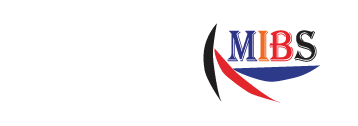- Utsource Holding Company Limited
- Home
- Products (39557)
- News
- Map
- Contact
- Web Statistic
- VISITORS:
Congratulations!
You��ve earned your daily login reward for today!
5 NP PointHere are the reward you��ve earned!
Check your Daily Login Rewards
Be sure to come back everyday for more rewards!
Thanks!
How to distinguish the three poles of thyristor
30-Jul-2025
Structure of thyristor
Thyristor is composed of N-type and P-type semiconductor materials alternately stacked layer by layer to form four regions: N+-P-N-P+. This structure forms three PN junctions, located on both sides and in the middle of the device.
1. Anode: The anode is the P-type semiconductor region in the thyristor, usually represented by the symbol "A".
2. Cathode: The cathode is the N-type semiconductor region in the thyristor, usually represented by the symbol "K".
3. Gate: The gate is the control terminal in the thyristor, which is an N+ type region, usually represented by the symbol "G".
How to distinguish the polarity of thyristors
1. Appearance identification: Most thyristor devices have polarity identification on the package, usually with the letters "A", "K" and "G" to represent the anode, cathode and gate.
2. Multimeter test: Using the diode test function of the multimeter, the forward voltage drop of the thyristor can be measured to determine the anode and cathode. Since the thyristor has unidirectional conductivity, there will be a lower forward voltage drop when it is forward-conducting, and it will not conduct in the reverse direction.
3. Circuit test: In the circuit, the anode of the thyristor is usually connected to the positive pole of the power supply, the cathode is connected to the load, and the gate receives the trigger signal through the control circuit.
4. Data sheet: Consult the data sheet of the thyristor, which usually provides a detailed polarity diagram and pin arrangement diagram.
Working principle of thyristor
The working principle of thyristor is based on the unidirectional conductivity of the PN junction and the control of the gate on the main PN junction.
1. Forward Blocking: In the absence of a gate trigger signal, a thyristor (SCR) will not conduct, even if a positive voltage exists between the anode and cathode.
2. Gate Triggering: When the gate receives sufficient trigger current, the SCR's main PN junction (N-P-N) is activated, causing the device to conduct.
3. Forward Conduction: Once the SCR is conducting, it will continue to conduct even after the gate trigger signal is removed, as long as the voltage between the anode and cathode remains.
4. Reverse Blocking: When the anode is negative relative to the cathode, the SCR is in reverse blocking, regardless of whether a gate trigger signal is present.
Applications of Thyristors
Due to their unique control characteristics, SCRs are widely used in power electronics:
1. Rectifiers: SCRs can be used as AC-to-DC rectifiers, achieving phase-controlled rectification through gate control.
2. Voltage Regulators: In devices such as dimmers and speed regulators, SCRs are used to adjust the output voltage and control the load.
3. Contactless Switches: Thyristors (SCRs) can be used as contactless electronic switches for high-voltage and high-current switching.
4. Overvoltage Protection: Thyristors can be used in conjunction with overvoltage protection circuits to suppress overvoltages in circuits.
Conclusion
SCRs are important power electronic devices. Proper identification of their anode, cathode, and gate terminals is crucial for proper device operation. The three terminals of a thyristor can be accurately distinguished through external markings, multimeter testing, circuit testing, and reference to the data sheet. The operating principle of thyristors is based on the unidirectional conductivity of the PN junction and gate control, making them widely used in rectification, voltage regulation, contactless switching, and overvoltage protection.
Utsource Holding Company Limited 58474938-000-06-24-A
1111 Sullivan St Irvine, CA 92614 U.S.A.
Tel:
Email:
Website: https://www.utsource.us
Website: https://utsource.newpages.com.my/
Website: https://utsource.onesync.my/
Mexico
Eje Central Lazaro Cardenas No.13 Piso 1005 Col.centro C.P.06050 Mexico��D.F.
Tel:
Tel:
Email:
Germany
Germany.
Tel:
Tel:
Email:
Hong Kong
FLAT/RM 22 5/F WAH LUEN CENTRE 15-21 WONG CHUK YEUNG STREET FOTAN NT HONG KONG.
Tel:
Email:
Browse by : Home - Classifieds - Companies - Location - Tags - Products - News & Promotion - Job Vacancy - Mobile Website - Google - SEO Results











